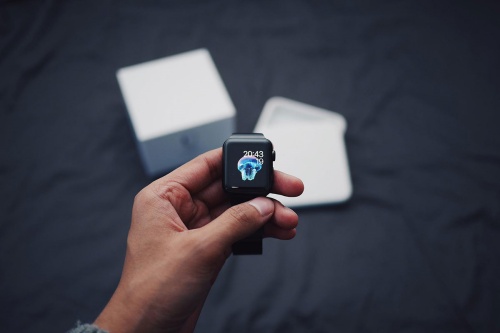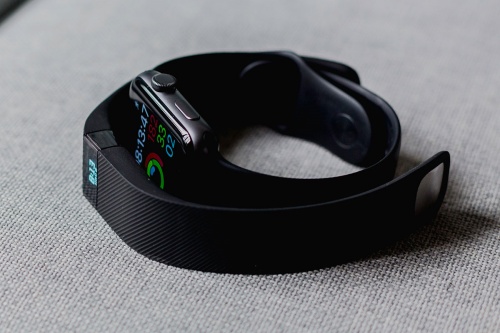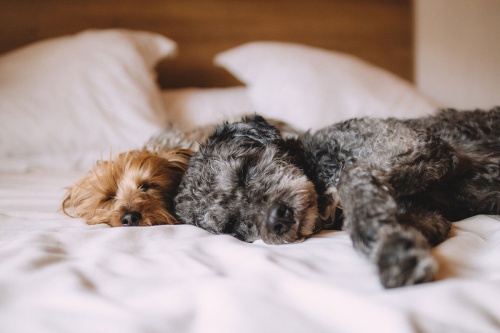How Does a Fitness Tracker Measure Sleep?
Modern fitness trackers are packed with features, allowing users to count the steps they take and calories they burn, all while tracking their diet and water intake. They are amazingly helpful tools for building new fitness habits and boosting their activity levels.
But fitness trackers can also help you track your longest period of inactivity, sleep. Getting enough sleep is a struggle for many people, and some of them might not even be aware of how much actual rest they get at night.
With a fitness tracker on your wrist, you can get valuable data and make lifestyle changes to improve your sleep, but before you put on a fitness tracker and go to bed, let’s talk about the technology behind this feature.
How Does a Fitness Tracker Know When You Are Asleep?
Undoubtedly, this is one of the most common questions because you can’t simply notify the fitness tracker when you’re asleep. Fitness wearables with a sleep tracking feature come with a designated “sleep mode” that monitors your movements.
When you wake up in the morning, the fitness tracker processes that data and gives you an overview of the last night’s sleep.
The methodology of tracking sleep through movements is called actigraphy and is widely used in scientific sleep studies.

Understanding Actigraphy
A professional sleep study will have an actigraphy device that is incredibly similar to a fitness tracker. Scientists also attach it to a person’s wrist, allowing them to track sleeping patterns.
Ideally, an actigraph (or actimetry sensor) is worn 24 hours a day, allowing scientists to get the most accurate data. The same logic can be applied to fitness trackers; if you want the most thorough sleep report, it’s best to keep it on your wrist all the time.
But how does actigraphy works precisely? Essentially, it relies on an integrated accelerometer that tracks all types of movements in every direction. It also detects speeds, specifically acceleration, and body tilt, allowing for a comprehensive movement monitoring system.
However, actigraphy conducted in clinical sleep studies utilizes devices specifically designed for sleep tracking, not a commercial fitness tracker, so everything we know about the accuracy of actigraphy comes from testing these specialized devices, not fitness trackers.
Also, measuring sleep through the wrist is not the same as tracking brain waves. Sleep researchers also use polysomnography or PSG, which gives them more reliable data. Of course, this means that the accuracy of a fitness tracker is limited.
Keep in mind that fitness tracker manufacturers are aware of the limitations of actigraphy and how well their device can detect sleep, so they typically allow users to override the data in the morning if it doesn’t make sense.
Tracking Sleep and Your Heart Rate
When we sleep, the heart rate fluctuates. In some sleep stages, your heart rate drops significantly, which the tracker will record. On the other hand, when you’re dreaming, the heart rate goes up, and that’s detected by the tracker too. Your heart rate is one of the strongest indicators when your body is in rest or sleep mode, and fitness trackers can monitor it using various technologies and sensors.
Most fitness wearables use pulse oximetry monitors to track blood oxygenation. As your heart rate goes up or down when you sleep, the fitness tracker utilizes an infrared light sensor to detect changes in your blood’s color. When the light passes through your skin, the pulse oximetry monitor records these changes.
But other technologies allow fitness trackers to monitor your heart rate when you sleep. A bioimpedance sensor measures the skin’s electrodermal response used to collect heart rate data. An optical sensor measures the pulse and rate at which the blood is pumped through the body.
This is not a comprehensive list of ways a fitness tracker can measure heart rate, but it gives you a better idea of how these wearables track sleep.
You also need to remember that numerous fitness tracker brands that offer this feature are not going to share their proprietary technology nor comment on its accuracy.

What About Sleep Anxiety?
If you don’t have any trouble falling or staying asleep, tracking sleep might seem unnecessary or something you’d try out of curiosity.
But, people with mild or severe sleep disorders may see fitness trackers as a helpful tool for learning more about their sleeping patterns.
However, this leads to an interesting paradox. A 2018 study has shown that tracking sleep with wearables increases anxiety, especially among already naturally self-conscious users.
Essentially, putting on a sleep tracker is more likely to lead to being awake longer and spending your day worrying about how much sleep you’ll get the following night.
Therefore, an unwanted result of tracking sleep with a fitness tracker is entirely inaccurate data that doesn’t represent your natural sleep pattern.
Can Fitness Wearables Track Sleep Stages?
When discussing how fitness trackers measure sleep, it’s crucial to differentiate sleep duration and quality.
While the integrated accelerometer offers some insight about sleep stages by tracking movement, without monitoring brain waves, it’s impossible to tell if you went through all sleeping stages during the night.
The Three Stages of Sleep
Every sleep phase has a clear purpose and is essential for your overall wellbeing. The first stage is light sleep. Your muscles are more relaxed during this stage, and your body may shift unconsciously.
Your heart rate and temperature drop, and your breathing slows down. This is also the phase when you are more likely to respond to sound or movement.
The second stage is deep sleep, and when your blood pressure also drops, your body works on building muscle mass and repairing cells.
It’s also the stage when the growth hormone is released, and your brain flushes waste and shows long and slow brain waves. It is much more difficult to wake up during this stage, and you’re more likely to be disoriented if you do.
The third stage is called Rapid Eye Movement or REM sleep, more familiar as the dreaming phase. In this period, your heart rate and breathing accelerate, and your muscles are immobile to prevent you from acting out your dreams. The REM stage is vital for better memory and solving problems.
Again, your fitness tracker will detect the lack of movement and your heart rate and register that you’re asleep. But it won’t be able to tell you how many deep sleep or REM stages you’ve had.
Can Fitness Trackers Help You Get More Sleep?
You might not be sure if a fitness tracker can help you get more or better sleep. After all, if you’re going to wear what is essentially a chunky bracelet in bed, it better be for a good reason. How can you be sure that wearing a fitness tracker to measure sleep is a good idea?
Your Sleep Is Interrupted
If you wake up frequently at night, a fitness tracker can come in handy. Perhaps your kids wake you up, or you have sleep apnea that interrupts your sleep.
Some people have vivid dreams that wake them up regularly. All these interruptions can leave you tired in the morning and less productive during the day.
At the same time, it might be impossible to tell just how much sleep you’ve lost. This is where a fitness tracker comes in, as it can track your movement and exact steps if you have to get out of bed.
You Want to Optimize Your Sleep
If you don’t have any sleep anxiety or known sleep disorders but want to improve your sleep, a fitness tracker can be useful.
It’s an especially practical device if you want to see precisely how long it takes you to fall asleep and whether you wake up at night.
Sleep trackers, in general, are used by athletes but can also be valuable to people who are getting older and want to ensure their sleep doesn’t lose quality.
Fitness Trackers vs. Smart Rings for Sleep Measuring
The fitness trackers are not the only wearable devices that can measure sleep. Another popular solution is the smart rings, which also come with integrated movement and heart rate sensors.
According to anecdotal evidence, smart rings may be more accurate than fitness trackers due to their design. Fingers have more capillaries and allow for better data recordings.
On the other hand, fitness trackers offer more features that allow users to get a more comprehensive view of their overall fitness and wellness levels.

Why Is Sleep so Important?
There have been countless research studies on sleep and books written about the topic, but why we sleep is still somewhat a mystery. We know for sure that sleep is tremendously important and that extended periods without sleep can lead to numerous health problems.
But whether you use a fitness tracker or not, getting enough sleep is vital for several reasons.
Your concentration, cognition, and overall productivity vastly depend on how well you sleep. Young children need sleep for the proper development of their bodies and minds.
Without proper sleep, every task is exponentially more difficult. Your motor skills, athletic performance, immune system, and mental health depend on getting enough high-quality sleep.
Using Your Fitness Tracker to Measure Sleep
If you have a fitness tracker that supports sleep mode, it can be interesting how valuable is the data it provides. While these smart wearables aren’t sophisticated like some other sleep measuring technologies used in a clinical environment, they can detect when you fall asleep and wake up.
Thanks to actigraphy, a method of measuring sleep through movement, you can get a good idea of how long you’ve been asleep. However, whether your brain has gone through all three sleeping stages is impossible to tell. Still, fitness trackers can be great additions to their mission to sleep better for those not overly anxious.
Would you measure sleep with a fitness tracker? Let us know in the comments section below.











